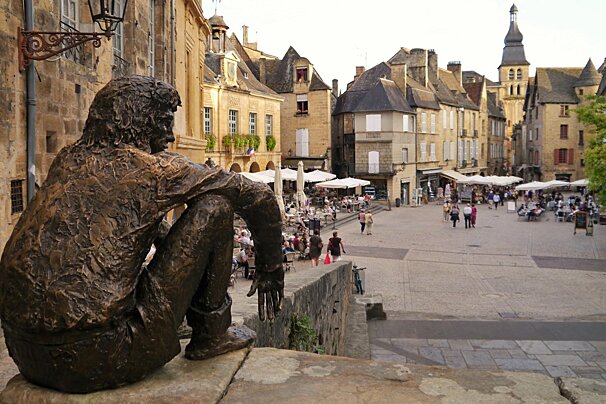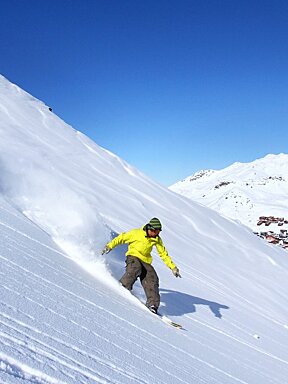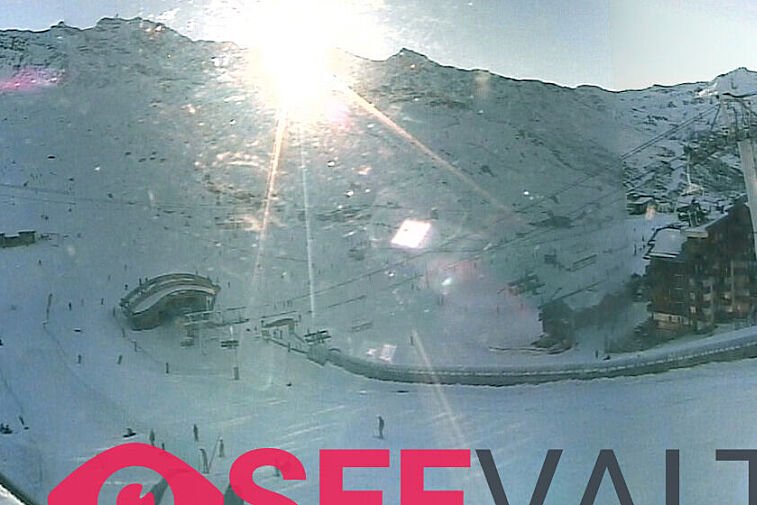Ski Fitness Video Guide
Pre-season ski training
Every year, when the lifts open, I rush excitedly to the top of the hill, strap into my board and set off for the first run of the new season. The cold, clear air in my nose and the sun on my cheeks I can't keep the smile off my face as the fresh snow creaks under my board. The whole day lies ahead from first lifts to last call. Or it would if I wasn't sweating, panting and massaging the cramp out of my calves at the end of the first run.
Skiing and snowboarding are physical. These days professional riders have physios, dietitians, personal trainers and psychologists on hand to help them achieve their athletic best. Whilst you may not have designs on setting a record time on Le Face or Le Vert or be looking to stomp back-to-back doubles in the pipe, a little bit of pre-season training will help make your week's holiday or your season more enjoyable and, hopefully, injury free.
There are gyms all across the Alps but as I was in chamonix for the day I spoke to Steph Lightfoot from Chamonix Gym.
Is there a specific fitness for skiers and snowboarders?
Fitness is a broad term, which can be divided into lots of different areas - ALL of which are applicable to skiers and boarders!
Strength - Focus on leg strength for skiing. Build strong quads and glutes (thighs and bum) to minimise that early season leg BURN. Think about hiring a personal trainer to make sure your technique is spot on. Or join a strength and conditioning class.
Cardio Fitness - general cardio vascular fitness (heart and lungs) is also vital. The better your general fitness and endurance, the more turns you'll be able to put in before the screaming lungs and burning legs bring you to a halt.
Core - Your power, posture and form come from core strength. You ‘drive' your skiing / boarding from your core, so the stronger it is, the better your ski technique will be, the longer you can keep going and the less likely you'll be to get injured. Join pilates or a core specific session at the gym.
Flexibility - Skiers and boarders have notoriously tight hamstrings, calves, glutes and quads. Keeping them supple is vital! The stiffer and shorter the muscles get the harder it is to ski/board well - and the more likely an injury. Think about yoga or a stretching class.
What are the muscle groups that we should concentrate on for ski fitness?
Quads (fronts of thighs), glutes (bum) and core strength (deep abdominals and back muscles)
Don't forget to stretch too! And don't totally ignore your upper body - you need your arms and shoulders every time you push up from the floor on a snowboard, as well as for poling with skis. Plus, if you wear a rucksack, upper body strength will help keep your posture good with the extra weight.
What are the best exercises to work these muscle groups?
Squats are great! They pretty much work everything you need for skiing and boarding. Either with a swiss ball against a wall (with dumbbells in each hand), or with a bar across your shoulders.
TIP: Watch your posture and starting position - and keep your core muscles 'locked' to help protect your back while you're squatting. Don't go too heavy too quick - get your form right and make sure you're working your legs and glutes, not straining your back. And watch the position of your feet and knees as you squat - try and keep everything in straight alignment and don't allow your hips to pull to one side, or your back to 'collapse'.
Lunges are also brilliant for working all your leg muscles and test your balance/proprioception too.
TIP: When you've nailed them on the floor (see video), incorporating an unstable platform is brilliant for skiers and boarders. It mimics all the fine balance and coordination challenges your brain will need to cope with when you head off piste!
If you're already ski / board fit, think about building up to more dynamic and powerful moves - jumping squats and lunges with a TRX or jumping on/off a bench / step replicate skiing and boarding brilliantly. You'll combine strength, power, control and balance! Exactly what you need on the mountain ...
Are there any bits of equipment that work best for skiers and snowboarders?
Cycling and the cross trainer are both great for general ski/snowboard fitness. Instead of just plodding along at a steady rate, think about doing short intervals (bursts) of say 30 seconds, where you really increase the resistance to help build leg strength. You'll get your heart and lungs working harder - as well as your legs. Short bursts of high effort replicate what you'll actually be doing on the slopes much better than holding a steady pace for long periods.
Also think about speed - move fast in short bursts and you'll improve the connection between your brain and muscles. The faster your reactions the better when it comes to skiing/boarding as you're having to constantly adapt to different slopes, different snow conditions and putting in turns at speed.
Weights? Dumbbells or an Olympic bar can be added to your squats and lunges to help build up both lower and upper body strength. A swiss ball is also a great piece of kit you can use at home.
No Weights? You can do a lot just using your body weight as resistance. With a bit of imagination, you can do a full ski-prep work out at home with absolutely no equipment and very little space!
What are the most common injuries skiers and snowboarders suffer from?
The absolute classic ski injury is a torn ACL (anterior cruciate ligament) - in your knee. It's often the slow, twisting 'nothing-y' falls which are the worst! The tumbles where your ski takes a while to come off can do major damage. While the high speed ‘yard sales' where you lose everything - skis, poles, gloves, hat, rucksack - are often relatively painless.
Skiers are also at risk from impact injuries - who hasn't fallen and wrapped themselves around their poles, only to end up with black and blue ribs? Or had a ski slide out from under you on ice and landed hard on one hip?
For boarders, wrists, shoulders and collar bones are vulnerable - usually from putting an arm out to stop a fall. Boarders may also be more at risk of head/ neck injuries from ‘catching an edge' - those falls where you're suddenly on the floor before you've even realised you're going down.
Can the chances of these injuries be reduced through exercise?
Definitely. Leg strength and generally keeping your muscles and joints in good condition goes a very long way to help protect against injuries. The stronger and healthier the muscles around each joint, the less chance you have of injuring your soft tissue ligaments and tendons.
Strong, supple muscles also help protect against broken bones. Physically, a bone or joint that is ‘padded' with muscle can absorb more impact in a fall. But also incorporating resistance (strength) training into your pre-ski fitness routine will help improve your bone density - therefore reducing the risk of a break when you fall.
Add balance and core strength into the mix and you help minimise your chances of falling - by improving your ability to stay on your feet. And improve your agility and speed and you'll be able to react quicker and further reduce your likelihood of a tumble.
Any final advice?
Try to start getting ski fit as far in advance as you can of your ski / board holiday. Real improvements in muscle strength and fitness levels take a few weeks to develop. So depending on your starting fitness level, aim to incorporate ski specific fitness training into your weekly exercise routine at least 6 weeks before your holiday.
![[itemref] living-room](https://cdm0lfbn.cloudimg.io/v7/_images_base_/image_uploader/arkiane/original/inter_00210069.jpg?ua=1579868382&p=carousel)

























